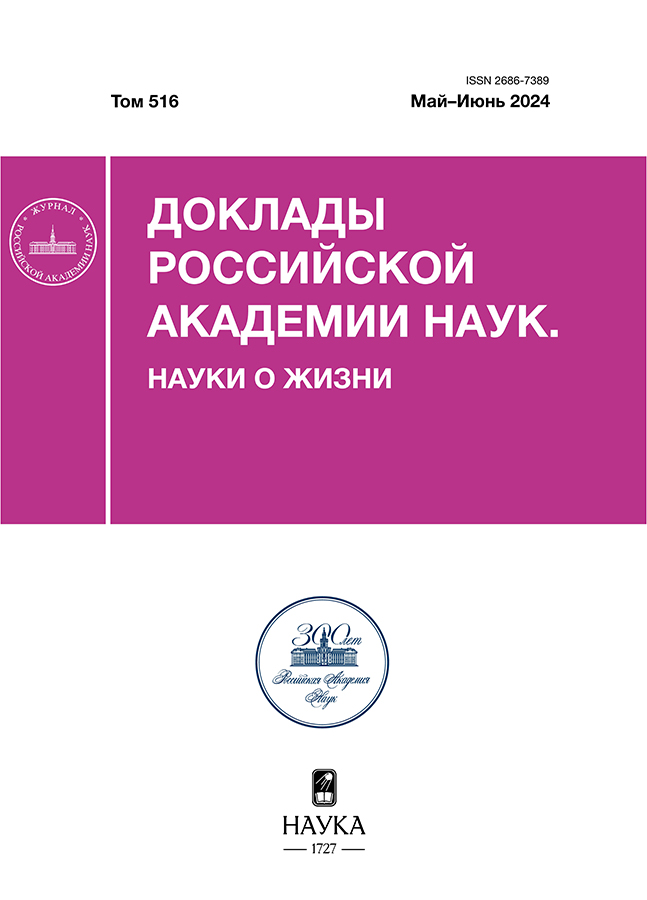Antigenic peptide–thioredoxin fusion chimeras for in vitro stimulus of CD4+ TCR+ Jurkat T-cells
- 作者: Ishina I.A.1, Zakharova M.Y.1, Kurbatskaia I.N.1, Mamedov A.E.1, Belogurov A.A.1,2, Rubtsov Y.P.1, Gabibov A.G.1,3,4
-
隶属关系:
- Shemyakin–Ovchinnikov Institute of Bioorganic Chemistry, Russian Academy of Sciences
- Evdokimov Moscow State University of Medicine and Dentistry
- Higher School of Economics
- Lomonosov Moscow State University
- 期: 卷 516, 编号 1 (2024)
- 页面: 64-68
- 栏目: Articles
- URL: https://cijournal.ru/2686-7389/article/view/651432
- DOI: https://doi.org/10.31857/S2686738924030119
- EDN: https://elibrary.ru/VTFRUM
- ID: 651432
如何引用文章
详细
Study of CD4+ T-cell response and T-cell receptor (TCR) specificity is crucial for understanding etiology of immune-mediated diseases and developing targeted therapies. However, solubility, accessibility, and stability of synthetic antigenic peptides used in T-cell assays may be a critical point in such studies. Here we present a T-cell activation reporter system using recombinant proteins containing antigenic epitopes fused with bacterial thioredoxin (trx-peptides) and obtained by bacterial expression. We report that co-incubation of CD4+ HA1.7 TCR+ reporter Jurkat 76 TRP-cells with CD80+ HLA-DRB1*01:01+ HeLa-cells or CD4+ Ob.1A12 TCR+ Jurkat 76 TRP with CD80+ HLA-DRB1*15:01+ HeLa-cells resulted in activation of reporter Jurkat 76 TPR after addition of recombinant trx-peptide fusion proteins, containing TCR-specific epitopes. Trx-peptides were comparable with corresponding synthetic peptides in their capacity to activate Jurkat 76 TPR. These data demonstrate that thioredoxin as a carrier protein (trx) for antigenic peptides exhibits minimal interference with recognition of MHC-specific peptides by TCRs and consequent T-cell activation. Our findings highlight potential feasibility of trx-peptides as a reagent for assessing the immunogenicity of antigenic fragments.
全文:
作者简介
I. Ishina
Shemyakin–Ovchinnikov Institute of Bioorganic Chemistry, Russian Academy of Sciences
编辑信件的主要联系方式.
Email: ishina.irina.a@gmail.com
俄罗斯联邦, Moscow
M. Zakharova
Shemyakin–Ovchinnikov Institute of Bioorganic Chemistry, Russian Academy of Sciences
Email: mariya.zakharova333@gmail.com
俄罗斯联邦, Moscow
I. Kurbatskaia
Shemyakin–Ovchinnikov Institute of Bioorganic Chemistry, Russian Academy of Sciences
Email: ishina.irina.a@gmail.com
俄罗斯联邦, Moscow
A. Mamedov
Shemyakin–Ovchinnikov Institute of Bioorganic Chemistry, Russian Academy of Sciences
Email: ishina.irina.a@gmail.com
俄罗斯联邦, Moscow
A. Belogurov
Shemyakin–Ovchinnikov Institute of Bioorganic Chemistry, Russian Academy of Sciences; Evdokimov Moscow State University of Medicine and Dentistry
Email: ishina.irina.a@gmail.com
Department of Biological Chemistry
俄罗斯联邦, Moscow; MoscowY. Rubtsov
Shemyakin–Ovchinnikov Institute of Bioorganic Chemistry, Russian Academy of Sciences
Email: ishina.irina.a@gmail.com
俄罗斯联邦, Moscow
A. Gabibov
Shemyakin–Ovchinnikov Institute of Bioorganic Chemistry, Russian Academy of Sciences; Higher School of Economics; Lomonosov Moscow State University
Email: ishina.irina.a@gmail.com
Academician of the RAS, Department of Life Sciences, Department of Chemistry
俄罗斯联邦, Moscow; Moscow; Moscow参考
- Pishesha N., Harmand T.J., Ploegh H.L. A Guide to Antigen Processing and Presentation // Nat. Rev. Immunol. 2022. V. 22. P. 751–764.
- Santambrogio L. Molecular Determinants Regulating the Plasticity of the MHC Class II Immunopeptidome // Front. Immunol. 2022. V. 13.
- Ishina I.A., Zakharova M.Y., Kurbatskaia I.N., et al. MHC Class II Presentation in Autoimmunity // Cells. 2023. V. 12.
- Chen B., Khodadoust M.S., Olsson N., et al. Predicting HLA Class II Antigen Presentation through Integrated Deep Learning // Nat. Biotechnol. 2019. V. 37. P. 1332–1343.
- Racle J., Guillaume P., Schmidt J., et al. Machine Learning Predictions of MHC-II Specificities Reveal Alternative Binding Mode of Class II Epitopes // Immunity. 2023. V. 56. P. 1359–1375.
- Butler M.O., Ansén S., Tanaka M., et al. A Panel of Human Cell-based Artificial APC Enables the Expansion of Long-lived Antigen-specific CD4+ T Cells Restricted by Prevalent HLA-DR Alleles // Int. Immunol. 2010. V. 22. P. 863– 873.
- Garnier A., Hamieh M., Drouet A., et al. Artificial Antigen-presenting Cells Expressing HLA Class II Molecules as an Effective Tool for Amplifying Human Specific Memory CD4+ T Cells // Immunol. Cell. Biol. 2016. V. 94. P. 662–672.
- Ishina I.A., Kurbatskaia I.N., Mamedov A.E., et al. Genetically Engineered CD80–pMHC-harboring Extracellular Vesicles for Antigen-specific CD4+ T-cell Engagement // Front. Bioeng. Biotechnol. 2024. V. 11.
- Rosskopf S., Leitner J., Paster W., et al. A Jurkat 76 Based Triple Parameter Reporter System to Evaluate TCR Functions and Adoptive T Cell Strategies // Oncotarget. 2018. V. 9. 17608.
- Hennecke J., Carfi A., Wiley D. C. Structure of a Covalently Stabilized Complex of a Human αβ T-cell Receptor, Influenza HA Peptide and MHC Class II Molecule, HLA-DR1 // EMBO J. 2000. V. 19. P. 5611–5624.
- Hahn M., Nicholson M.J., Pyrdol J., Wucherpfennig K.W. Unconventional Topology of Self Peptide–Major Histocompatibility Complex Binding by a Human Autoimmune T Cell Receptor // Nat. Immunol. 2005. V. 6. P. 490–496.
- Belogurov A.A., Kurkova I.N., Friboulet A., et al. Recognition and Degradation of Myelin Basic Protein Peptides by Serum Autoantibodies: Novel Biomarker for Multiple Sclerosis // The Journal of Immunology. 2008. V. 180. P. 1258–1267.
- Mamedov A., Vorobyeva N., Filimonova I., et al. Protective Allele for Multiple Sclerosis HLA-DRB1*01:01 Provides Kinetic Discrimination of Myelin and Exogenous Antigenic Peptides // Front. Immunol. 2020. V. 10.
- Álvaro-Benito M., Freund C. Revisiting Nonclassical HLA II Functions in Antigen Presentation: Peptide Editing and Its Modulation // HLA. 2020. V. 96. P. 415–429.
补充文件












